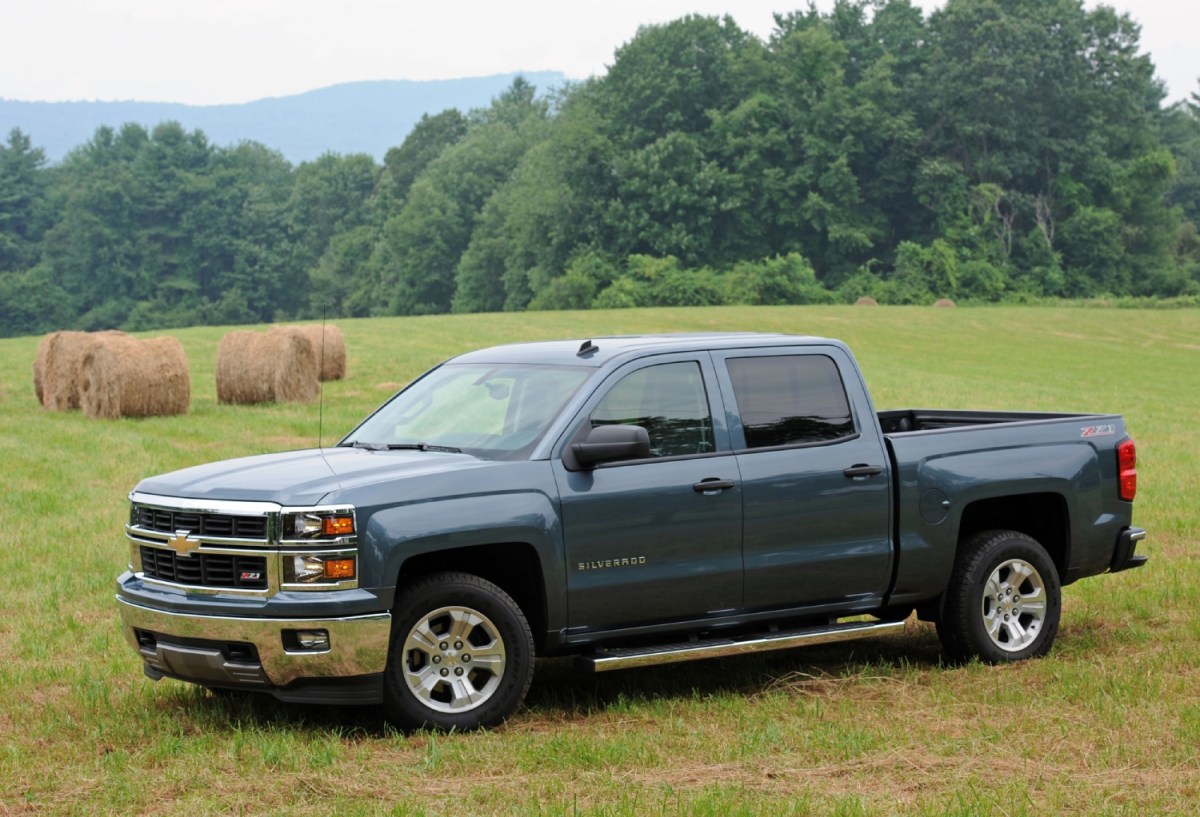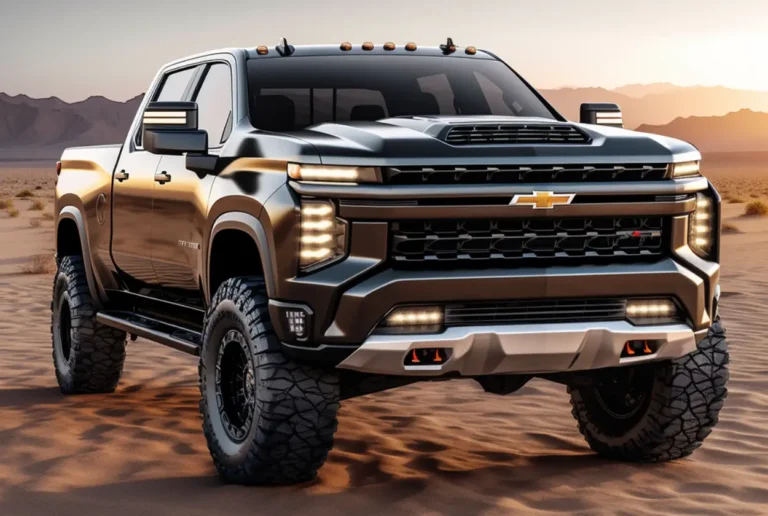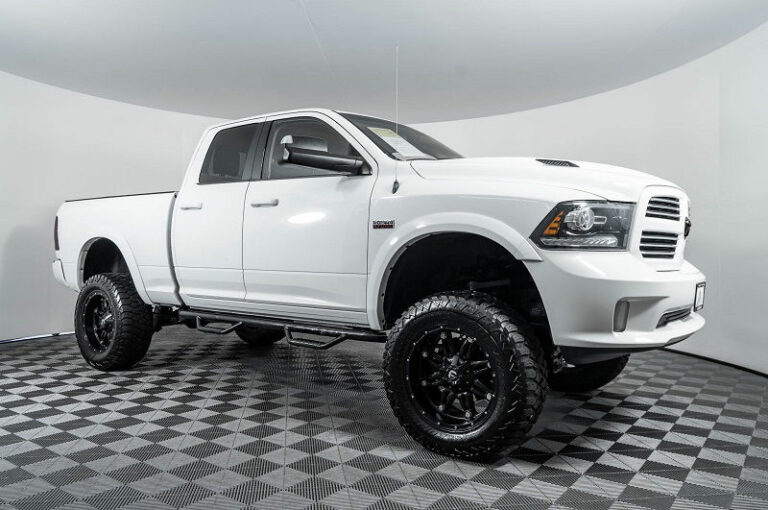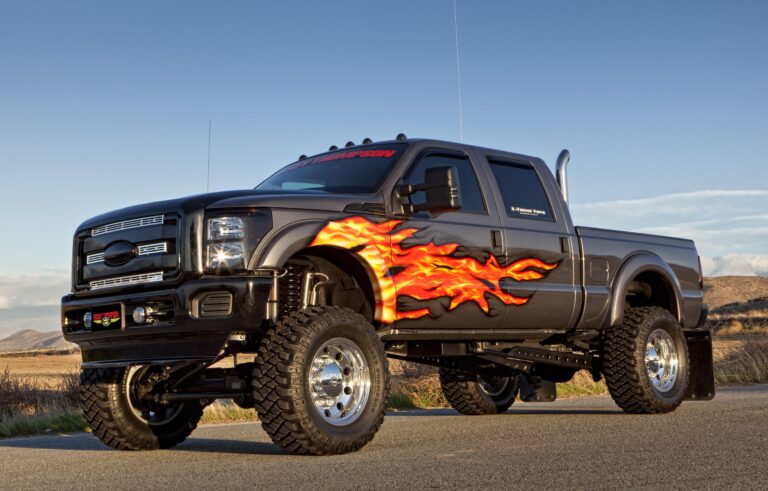Used Pickup Trucks Under $20,000: Your Ultimate Guide to Affordable Utility
Used Pickup Trucks Under $20,000: Your Ultimate Guide to Affordable Utility cars.truckstrend.com
In an era where new vehicle prices continue to soar, the prospect of owning a versatile, capable pickup truck can seem like a distant dream for many. However, a robust and ever-growing market exists for used pickup trucks, particularly those available for under $20,000. This segment represents a sweet spot for budget-conscious buyers, offering an accessible entry point into truck ownership without compromising on utility, reliability, or the sheer satisfaction of having a truck at your disposal.
Whether you’re a small business owner needing a workhorse, a weekend warrior looking for adventure, a DIY enthusiast, or simply someone who appreciates the practicality of a truck, the used market under $20,000 holds a wealth of opportunities. This comprehensive guide will navigate you through the world of affordable used pickups, helping you make an informed decision that meets your needs and your budget.
Used Pickup Trucks Under $20,000: Your Ultimate Guide to Affordable Utility
Why Buy a Used Pickup Truck Under $20,000?
The appeal of a pre-owned truck in this price bracket extends far beyond just the initial cost savings. Here’s why it’s a smart move for many buyers:
- Significant Cost Savings: This is the most obvious benefit. New trucks depreciate rapidly, especially in their first few years. Buying used means you avoid this steep initial depreciation, getting more truck for your money. You’ll also likely save on sales tax, registration fees, and potentially insurance premiums.
- Avoidance of Depreciation: Once you drive a new truck off the lot, its value drops significantly. A used truck has already undergone its most substantial depreciation, meaning its value will likely hold steadier during your ownership.
- Proven Reliability: Many trucks in the sub-$20,000 category have accumulated a fair amount of mileage and years. This isn’t necessarily a bad thing; it means their common issues (if any) are well-documented, and many have already undergone necessary repairs or maintenance. You can research specific models and years to understand their long-term reliability.
- Versatility for Every Need: From hauling lumber and towing trailers to weekend camping trips or simply tackling daily commutes, a pickup truck offers unmatched versatility. At this price point, you can acquire a capable vehicle without the financial burden that might deter you from using it for tough jobs.
- Customization Potential: With less concern about "damaging" a brand-new vehicle, used trucks often become canvases for personalization. Lift kits, aftermarket wheels, bed liners, and other modifications are more appealing when the initial investment is lower.

Key Considerations When Shopping
Before diving into specific models, it’s crucial to define your needs and understand the factors that will influence your purchase.
- Beyond the Purchase Price: Total Cost of Ownership: Remember that the sticker price is just one part of the equation. Factor in potential maintenance, fuel economy (older trucks can be thirsty), insurance, and registration costs. Get quotes for these before committing.
- Intended Use: How will you primarily use the truck?
- Heavy Work (Towing/Hauling): Look for robust full-size trucks with powerful V8 engines, appropriate towing packages, and strong frames.
- Off-Roading/Recreation: Prioritize 4WD, higher ground clearance, and durable suspension components.
- Daily Driver/Light Duty: Mid-size trucks or full-size trucks with V6 engines might offer better fuel economy and easier maneuverability.

- Truck Size and Type:
- Mid-size (e.g., Toyota Tacoma, Nissan Frontier): Easier to park, often better fuel economy, but less towing/hauling capacity.
- Full-size (e.g., Ford F-150, Chevy Silverado 1500, Ram 1500): More powerful, higher towing/hauling, spacious cabs, but larger footprint.
- Cab Configuration:
- Regular Cab: Two doors, single row of seats. Best for work, minimal passenger space.
- Extended Cab (or Quad Cab, SuperCab, Access Cab): Two full-size front doors, two smaller rear doors (often rear-hinged), small rear jump seats. Good for occasional passengers.
- Crew Cab (or SuperCrew, Double Cab): Four full-size doors, spacious rear seating. Best for families or regularly transporting multiple passengers.
- Bed Length: Varies with cab type. Short (5.5 ft), Standard (6.5 ft), Long (8 ft). Choose based on what you plan to haul.
- Drivetrain: 2WD vs. 4WD:
- 2WD: More affordable, better fuel economy, suitable for paved roads and light-duty work.
- 4WD: Essential for off-roading, snow, mud, or slippery conditions. More complex, heavier, and generally more expensive.
- Engine Type: V6 engines offer a balance of power and efficiency, while V8s provide maximum towing and hauling capability but consume more fuel.
- Mileage vs. Age: A lower-mileage older truck might have sat more, leading to dried seals or rubber components. A higher-mileage newer truck might indicate consistent use and maintenance. Focus on the condition and maintenance history more than just the odometer reading.

Top Contenders: Best Used Pickup Trucks Under $20,000
While market availability and specific conditions vary, certain models consistently offer good value and reliability in this price range. You’ll typically be looking at models from the late 2000s to early 2010s, with mileage ranging from 100,000 to 200,000 miles.
- Ford F-150 (12th Generation: 2009-2014): The best-selling truck for decades, F-150s are abundant on the used market. Look for models with the 5.0L V8 or the robust 3.7L V6. They offer a good balance of capability and comfort. Common considerations: Rust on rocker panels and wheel wells, potential spark plug issues on older 5.4L engines (less common in this generation).
- Chevrolet Silverado 1500 / GMC Sierra 1500 (GMT900 Generation: 2007-2013): These GM twins are known for their comfortable ride, durable V8 engines (5.3L and 6.2L), and strong work ethic. They are a solid choice for all-around utility. Common considerations: Active Fuel Management (AFM) issues on some V8s, rust around rear wheel wells and rocker panels, dashboard cracks.
- Toyota Tundra (2nd Generation: 2007-2013/2014): Renowned for their legendary reliability and powerful i-Force V8 engines (4.7L or 5.7L). While often commanding a slightly higher price for their age, their longevity makes them a worthwhile investment. Common considerations: Frame rust (especially in older models from salty regions – critical inspection needed!), secondary air pump failures.
- Toyota Tacoma (2nd Generation: 2005-2015): The undisputed king of mid-size reliability and resale value. Finding a good Tacoma under $20,000 might mean higher mileage or an older model year, but their durability is unmatched. Critical consideration: Frame rust. Toyota had a recall for this; ensure any affected trucks had the frame replaced or treated.
- Nissan Frontier (2nd Generation: 2005-2021): Often overlooked, the Frontier offers robust V6 power (4.0L), a durable chassis, and a more straightforward design. They can be a great value, especially compared to Tacomas. Common considerations: SMOD (Strawberry Milkshake of Death) – transmission fluid mixing with coolant on specific automatic transmission models (pre-2010, inspect service records), interior plastics can feel cheap.
- Ram 1500 (4th Generation: 2009-2013): Known for its comfortable coil-spring rear suspension (unlike leaf springs in competitors), the Ram 1500 offers a smoother ride and the potent Hemi V8. Common considerations: Electrical quirks, transmission issues on some early models, rust.
The Inspection Process: What to Look For
Buying a used truck, especially one over a decade old, requires a meticulous inspection. Don’t skip these steps:
-
Exterior:
- Rust: This is the #1 enemy of older trucks. Inspect the frame (especially near welds and suspension mounts), wheel wells, rocker panels, cab corners, and bed. Surface rust is manageable; structural rust is a deal-breaker.
- Body Panels: Check for consistent gaps, ripples, or mismatched paint, which could indicate past accident repair.
- Tires: Look for uneven wear, which could signal alignment or suspension issues. Check tread depth.
- Lights/Glass: Ensure all lights work and there are no significant cracks in the windshield.
-
Under the Hood:
- Fluid Leaks: Look for oil, coolant, power steering, or transmission fluid leaks.
- Belts and Hoses: Check for cracks, fraying, or bulging.
- Battery: Look for corrosion.
- Engine Noise: Listen for knocking, ticking, or excessive rattling.
- Check Engine Light: If it’s on, get it scanned. If the seller just cleared it, it might come back on during the test drive.
-
Underneath the Truck:
- Frame Integrity: This is paramount. Look for bends, cracks, or serious rust. Bring a flashlight and get on your back if possible.
- Suspension: Check shocks/struts for leaks, and look for worn bushings or ball joints.
- Exhaust System: Look for significant rust or holes.
-
Interior:
- Wear and Tear: Assess the condition of seats, carpet, and dashboard. Excessive wear might indicate high use or neglect.
- Electronics: Test all windows, locks, radio, HVAC, and dashboard lights.
- Smell: Any strange odors (mold, smoke, burning)?
-
Test Drive:
- Engine Performance: Does it accelerate smoothly? Any hesitation or loss of power?
- Transmission: Does it shift smoothly through all gears, both up and down? Any jerking, slipping, or delayed engagement?
- Brakes: Do they feel firm and stop the truck smoothly without pulling or grinding?
- Steering: Is it responsive? Any looseness or strange noises when turning?
- Suspension: Drive over bumps to check for excessive bouncing or clunking.
- Listen: Turn off the radio and listen for any unusual noises (whining, clunking, squealing).
-
Documentation:
- Service Records: A well-documented service history is a huge plus.
- Vehicle History Report (CarFax/AutoCheck): Essential for checking accident history, title issues (salvage, flood), odometer discrepancies, and previous ownership.
-
Pre-Purchase Inspection (PPI): This is the single most important step. Pay an independent, trusted mechanic to perform a thorough inspection. They can identify issues you might miss and provide an estimate for any necessary repairs. This small investment can save you thousands down the line.
Tips for a Successful Purchase
- Set a Realistic Budget: And stick to it. Remember to leave a buffer for immediate maintenance or unforeseen repairs.
- Research Specific Models: Once you narrow down your choices, delve into common problems for those specific year ranges and models. Forums and owner groups are excellent resources.
- Be Patient: The perfect truck might not appear overnight. Don’t rush into a purchase.
- Don’t Be Afraid to Walk Away: If something feels off, or the seller is evasive, it’s okay to move on. There are plenty of other trucks out there.
- Negotiate: Always negotiate the price. Research comparable listings to know a fair market value.
- Consider Private Sellers vs. Dealerships: Private sellers might offer better prices but typically come with no warranty. Dealerships might offer limited warranties or certified pre-owned options, but at a higher price.
Potential Challenges and Solutions
- High Mileage: Don’t automatically dismiss a high-mileage truck. If it has a comprehensive service history indicating diligent maintenance, it could be a solid choice. Focus on condition over just the number on the odometer.
- Hidden Problems: The solution is a thorough pre-purchase inspection by a qualified mechanic.
- Rust: While minor surface rust can be treated, widespread or structural rust is a major red flag. Avoid trucks with significant frame rust, as it compromises safety and integrity.
- Finding the "Right" One: Expand your search radius, use multiple online marketplaces (Craigslist, Facebook Marketplace, AutoTrader, CarGurus), and set up alerts for new listings.
- Financing Older Vehicles: Banks can be more hesitant to finance older, higher-mileage vehicles, or they might offer higher interest rates. Be prepared for potentially limited financing options or consider a personal loan if needed.
Price Table: Representative Used Pickup Trucks Under $20,000
Please note: Prices are highly variable based on location, mileage, condition, trim level, and specific features. This table provides estimated ranges for models typically found under $20,000.
| Model | Typical Years in Range | Estimated Price Range ($) | Key Strengths | Common Considerations |
|---|---|---|---|---|
| Ford F-150 | 2009-2014 | $10,000 – $18,000 | Abundant, versatile, strong engines (5.0L V8) | Rust (rocker panels, wheel wells), exhaust manifold leaks |
| Chevy Silverado 1500 / GMC Sierra 1500 | 2007-2013 | $10,000 – $18,000 | Reliable powertrains, comfortable ride | AFM issues on some V8s, rust (rear wheel wells, rockers) |
| Toyota Tundra | 2007-2013 | $12,000 – $20,000 | Legendary reliability, powerful V8 | Higher mileage for price, frame rust (critical check) |
| Toyota Tacoma | 2005-2015 | $14,000 – $20,000+ | Excellent resale, compact, very reliable | Frame rust (critical!), high demand = higher price |
| Nissan Frontier | 2005-2021 | $8,000 – $16,000 | Durable, good value, V6 power | SMOD (early auto models), interior plastics |
| Ram 1500 | 2009-2013 | $9,000 – $17,000 | Hemi V8, coil spring ride (smoother), comfortable | Electrical quirks, transmission issues (some), rust |
Frequently Asked Questions (FAQ)
Q: Is high mileage always a deal-breaker for a used truck?
A: Not necessarily. A truck with 150,000+ miles that has been meticulously maintained and has a full service history can be a better buy than a lower-mileage truck that has been neglected. Focus on condition, maintenance records, and the results of a pre-purchase inspection.
Q: Should I buy from a dealer or a private seller?
A: Dealers often offer convenience, financing options, and sometimes limited warranties, but usually at a higher price. Private sellers typically offer lower prices but "as-is" sales, meaning you bear all risk. If buying from a private seller, be extra diligent with inspections and vehicle history reports.
Q: What’s the most important thing to check for when buying a used truck?
A: Frame rust and the overall structural integrity of the truck. Rust can compromise safety and lead to costly, often unfixable, problems. After that, the condition of the engine and transmission are paramount.
Q: Can I finance a used truck under $20,000?
A: Yes, but financing options might be more limited than for newer vehicles. Interest rates can also be higher. Check with banks, credit unions, and online lenders. Be prepared for a potentially larger down payment requirement.
Q: How much should I budget for immediate repairs or maintenance after buying a used truck?
A: It’s wise to set aside at least $1,000 to $2,000 for immediate maintenance items (fluids, filters, spark plugs, belts, tires if needed) or unexpected repairs that might arise shortly after purchase. A pre-purchase inspection will help you gauge this more accurately.
Conclusion
Purchasing a used pickup truck under $20,000 is a highly practical and financially savvy decision for countless individuals and businesses. While it requires diligent research, careful inspection, and a bit of patience, the reward is a versatile, capable, and often long-lasting vehicle that can tackle a wide array of tasks without breaking the bank. By understanding your needs, knowing what to look for, and leveraging professional inspections, you can confidently drive home in a reliable workhorse that serves you for years to come. Your next great adventure, or demanding project, could be just a used truck away.






